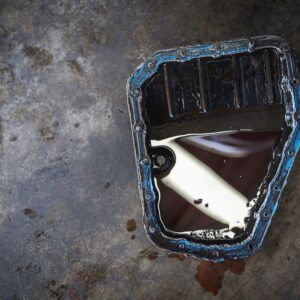Topping up on oil, gasoline, and antifreeze is an important part of maintaining and running a vehicle. But transmission fluid is another matter. Because it’s part of a closed system, the fluid levels usually only go down when there’s a leak somewhere. These days, the transmission fluid in the system is meant to last the vehicle’s lifespan. That’s why many manufacturers are opting to seal off access to transmission fluid altogether, leading to a so-called sealed transmission.
Sealed Transmission Explained
Sealed transmissions are, as their name implies, sealed off completely with no easy way to get to the fluid inside. Other than this fact, they act much like usual transmission systems, which help adjust gears and manipulate power from the engine. The fluid inside a sealed transmission is advertised to last the transmission’s lifetime, meaning no maintenance or fluid change should be needed to a certain extent. However, do note that when the transmission fluid goes bad, the entire transmission system is more likely to fail. So while the marketing isn’t false, it can easily be misconstrued.
It’s easy to tell if you have a sealed transmission in your vehicle once you check under the hood. You’ll notice a distinct lack of a transmission dipstick anywhere in the engine bay. The dipstick handle is usually red and easy to spot.

Benefits and Drawbacks of a Sealed Transmission
Sealed transmissions have advantages and disadvantages you should keep in mind, especially when you’re comparing them to traditional unsealed transmissions.
Benefits
One of the main benefits of a sealed transmission is that vehicle maintenance becomes easier. Sealed transmissions protect the transmission fluid from contaminants. While these contaminants can still enter the system, they build up at a much slower rate. The added protection means you’re less likely to need an unexpected transmission fluid flush between your vehicle’s scheduled maintenance. As a result, you’ll also be able to reduce the amount of transmission fluid being dumped in landfills.
Drawbacks
While sealed transmissions are marketed to last the vehicle’s lifetime, they still need maintenance and repairs. The frequency of their repairs has a lot to do with the conditions the transmission is put through. Many experts have noted that if the vehicle is used for off-road driving or towing, the fluid in its sealed transmission might need checking after 50,000 miles. The same goes for a vehicle that drives through particularly dusty conditions. As for maintenance, sealed transmissions have maintenance intervals just like any other transmission system.
The amount of stress placed on the transmission is what will determine whether it needs to be checked and repaired. One of the main drawbacks then becomes the fact that you can’t check the condition of your transmission fluid yourself because of the seal. You likely won’t notice any problems with the transmission fluid until problems start arising. It’s also much more difficult to repair.
Sealed Transmission Maintenance and Repair
At this point you might be wondering, “Can a sealed transmission be serviced?” In short, yes. Keep in mind that while a sealed transmission has no dipstick, they still need to go through maintenance intervals. To service a sealed transmission, you have to drain it, fill it through a fill plug, then remove a fill or check plug to see if fluid runs out, usually while the engine is running. If transmission fluid comes out slowly, then the transmission is full. The sealed aspect of a sealed transmission doesn’t actually mean completely sealed and unable to be serviced.
Technically, a sealed transmission means there is no dipstick. However, there is still a maintenance interval for this.
–Anthony Harlin, ASE Certified Master Automobile Technician
A good example of this is the 2012 and 2011 Toyota Sienna. The 2012 model has an automatic transmission and no dipstick, meaning it has a sealed transmission. Meanwhile, the 2011 Toyota Sienna with the exact same transmission has a dipstick, meaning it has an unsealed transmission. Because they have the same transmission, sealed or unsealed, mileage intervals for both models are the same.
Maintaining and repairing a vehicle’s sealed transmission yourself is possible, but it’s the sort of project even experienced hobbyists might need expert help for. There’s a set process that needs to be followed which includes raising the vehicle up on a lift. If you notice problems while switching gears in your vehicle, it’s best to have a licensed mechanic check the fluid in your sealed transmission.
Once they fix whatever’s wrong, the mechanic can even do a sealed transmission fluid change if needed. If you’re particularly worried about your vehicle’s transmission fluid levels due to, say, high mileage, you can always pay for a fluid flush and change regardless. When it comes to transmission, it’s better to be safe rather than sorry.
While car manufacturers might advertise the sealed transmission as a lifetime part, remember that the definition of “lifetime” can vary. You still need repairs and regularly scheduled maintenance, which can be inconvenient because sealed transmissions are much more difficult to repair. But given their penchant for keeping contaminants out of the system, a sealed transmission will still save you a few headaches in its lifetime.
Any information provided on this Website is for informational purposes only and is not intended to replace consultation with a professional mechanic. The accuracy and timeliness of the information may change from the time of publication.
































